Gluten Free Defined: What and By Whom?
As an Amazon Associate and member of other affiliate programs, I earn from qualifying purchases.
Too many think they know what gluten free means. However, how is the term gluten free defined? This post aims to help you know what is, and is not gluten free. In addition, it lays out who makes these decisions, and what safeguards are in place.
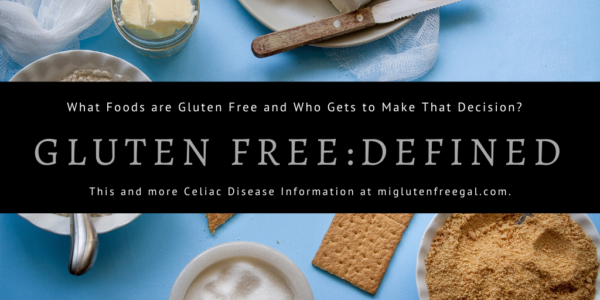
The Only Celiac Disease Treatment
The first thing you need to know is that there is no oil, no pill, no medical intervention for Celiac Disease OTHER than the gluten-free diet. You can’t grow out of this disease. You can’t “cheat” on it either. Think of the gluten-free diet as your new BFF. (Best Friend Forever)
What do you know about gluten? Hopefully, your doctor referred you to a dietitian after your celiac disease diagnosis. Maybe you only received a piece of paper of do’s and sent on your way. Either way, you are not defined by your gluten free diagnosis. You simply need to follow a certain diet to live a better life.
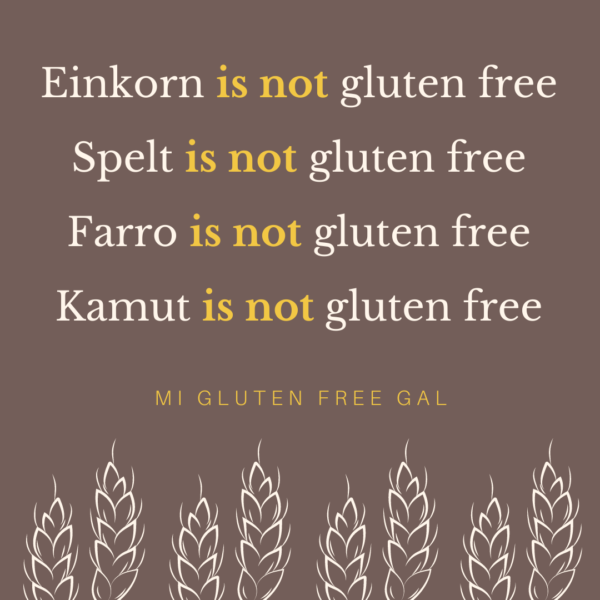
Which Foods are NOT Gluten Free?
So what do you absolutely need to stop eating? Wheat, rye, barley and all of their offspring. Sometimes oats. Wheat has many different names, such as spelt, graham, couscous, seitan and many more. You also need to stay away from malt, because it’s derived from barley.
In addition, the U.S. bans “gluten-free barley.” (Investors recently engineered gluten free barley in another country.) Of course, this also means that regular beer is out. This also goes for “gluten removed” beer. Research has shown it to be unsafe for those with Celiac Disease.
Where Gluten Hides
Gluten is stealthy. It hides in all sorts of places that you wouldn’t even imagine. Soy sauce. Twizzlers. Potato Chips. Taco Seasoning. It’s also in things that you may not think of, because you don’t know how they’re prepared. Crab cakes. Meatloaf. Cheeses made from bread mold.
You need to check your medications as well, both prescription and over-the-counter. Even though gluten cannot penetrate the skin, we should still check lotions or anything that could come into contact with our mouths. It’s important to make sure your lipstick is gluten-free too.
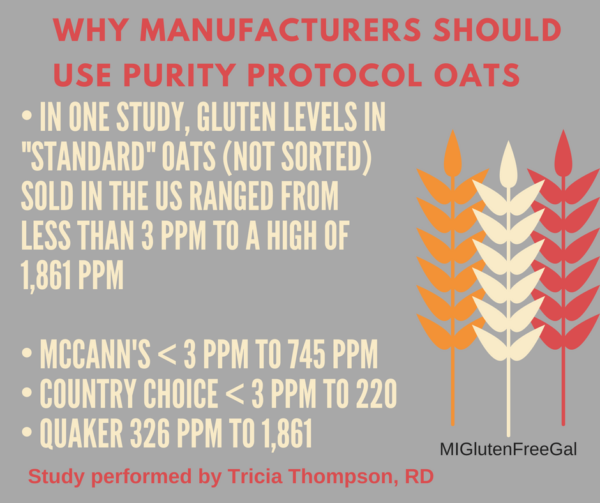
Are Oats Gluten Free?
A word about oats. Most doctors will tell those who are newly diagnosed to stay away from oats for at least a year after diagnosis. Oats in and of themselves, by definition, do not contain gluten. BUT, they are often grown in fields and harvested with wheat. It’s practically impossible to separate wheat grains from oat grains, not to mention the dust and particulate matter.
Many experts and advocates will strongly encourage anyone with Celiac Disease to only eat purity protocol oats. (Oats grown in dedicated gluten free fields.) Recently manufacturers have started to do mechanical, optical sorting of oats to pick out any wheat, barley or rye grains. Manufacturers using this method include General Mills, who make Cheerios and Lucky Charms. Read my post explaining that not all “gluten free oats” are the same.
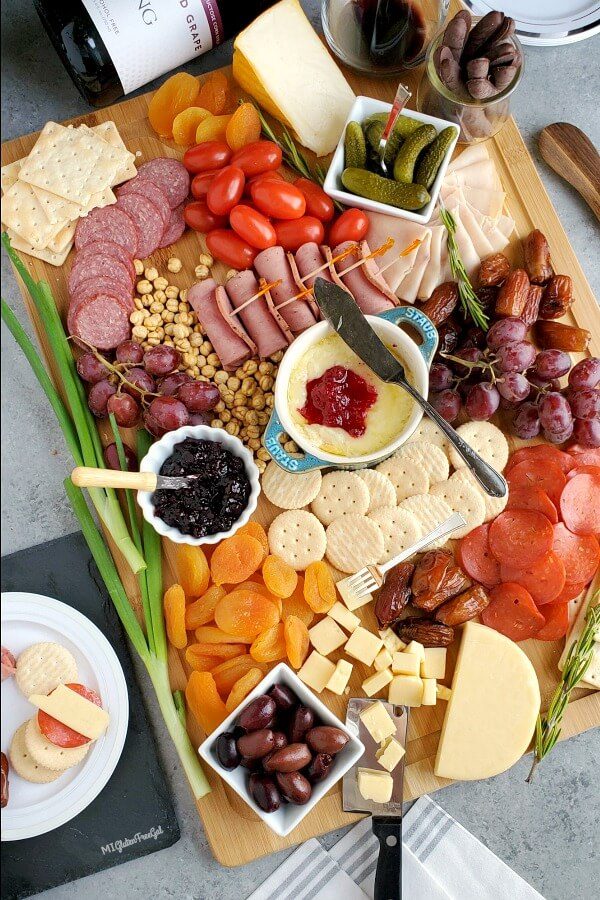
Which Foods are Gluten Free?
So now that we’ve talked about what you can’t have, let’s focus on what you CAN have. Fresh fruits, vegetables, meats (preferably lean), dairy, and lots of other things. Remember, gluten is only found in grains. Therefore, any natural grain free food is fair game. This is your opportunity to get creative in the kitchen!
I think one of the biggest challenges in this medically necessary diet is to make the mental switch of focusing on all the food you can eat, and not on what you can’t. It’s about learning to substitute the no-no’s with the “sure, go ahead!” We can have grains like rice, corn, quinoa, amaranth, millet and teff. We can also eat buckwheat, which is actually a relative of rhubarb and has no connection to “wheat” at all.

What is Cross Contact?
A quick word about cross-contact. This means gluten-free items come in contact with gluten containing grains. This doesn’t just happen in the manufacturing process. If you’re the only gluten-free eater in a gluten full home, it can happen in your house too. Most experts recommend celiac disease patients purchase a new dedicated toaster and a new dedicated colander.
Cross-contact comes into play when using condiments as well. Gluten-containing crumbs can find their way back into butter dishes, jam jars, peanut butter containers, and much more. Those who are the only GF eaters in the house often find it easier to have their own condiment containers.
A reminder that “cross contact” and “cross contamination” are two VERY different things. Cross contamination involves bacteria, such as listeria in chicken, touching other food items. Bacteria can be killed. Gluten cannot. Therefore, please use correct terminology, especially when speaking to restaurants.
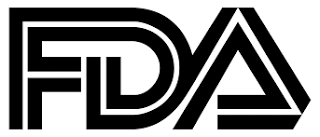
FDA Defines the Term “Gluten Free”
It’s one thing to know what grains contain gluten. It’s another thing to claim that something is gluten-free. In 2014, the FDA officially defined gluten free as containing less than 20 PPM of gluten in a given product. (However, they often fail at enforcing that rule.)
Prior to this ruling, manufacturers could label an item as gluten free without having to adhere to a safe standard. How did they come up with 20 PPM? It was based on research done by Dr. Alessio Fasano and other leading Celiac Disease doctors. This definition only applies to manufactured products, and not eating establishments or bakeries.
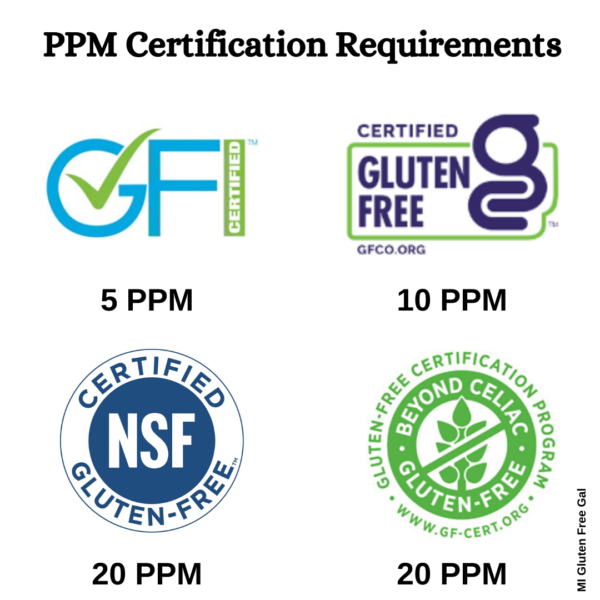
Gluten Free Certification Organizations
Unfortunately, producers don’t have to verify with the FDA that their product actually tests below 20 PPM before they print that on packaging. This is where third-party certifying organizations step in, trying to protect the Celiac Disease population. The National Celiac Association, the Gluten Intolerance Group, Beyond Celiac and NSF all have certification seals.
- The National Celiac Association transferred ownership of their seal program in 2019 and endorsed the newly formed GF Certified program through GFFP USA. Products bearing their seal must test, independently, under 5 ppm. They also audit all manufacturing facilities.
- The GFCO is a certification program through the Gluten Intolerance Group. Every product they certify independently tests to under less than 10 PPM. Certified products are submitted to regular testing.
- NSF International certifies packaged foods and supplements that meet the FDA requirement of less than 20 PPM. They certify the gluten free Girl Scout cookies, as well as other products.
- Beyond Celiac endorses the GFCP certification program, managed by the Allergen Control Group. Their auditors insure that facilities operate with best practices and meet the 20 PPM requirement.
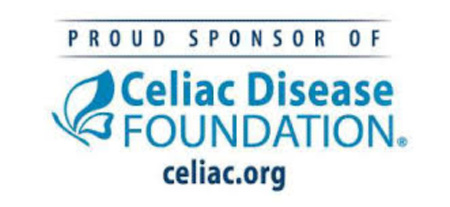
The Celiac Disease Foundation Does NOT Certify Gluten Free Food
You may see this Celiac Disease Foundation logo on certain products in the store. It’s most often found on General Mills products such as Cheerios. This logo highlights that the brand donates money to the CDF. In no way do products bearing this logo undergo third party product testing. The product may still be gluten free. Just know that the CDF does not perform product testing.
“May Contain Wheat” Labels are Not Helpful
These certifications especially help when products made in shared facilities come in to question. The FDA does not regulate nor require “May contain” statements. In addition, consumers find them incredibly confusing. To learn more about the issue of “may contain” statements, watch Tricia Thompson’s informational videos on her site, Gluten Free Watchdog.
Certified products that bear a “may contain” wheat or a “manufactured in a facility where wheat is present” still undergo strict testing and manufacturing process scrutiny. Products made in the “same facility” may still be produced in a dedicated gluten free atmosphere.
Final Thoughts
This is a lot of information to digest, and it’s probably overwhelming. I received my diagnosed almost 2 decades and I learn new things all the time. It will get easier. In the meantime, fall in love with your kitchen again, take a deep breath, and enjoy the bounty of naturally gluten-free foods you can eat in abundance!
This article is part of a series on Celiac Disease and gluten-free living basics. Others include:
Why Celiac Disease Makes Food Your Enemy (A primer on Celiac Disease)
Proper Physical and Emotional Care, post diagnosis
Eating Outside of the Home and Other Resources

Thank you for this post.
In New Zealand, labelling for GF means no Gluten, where reading your article in the USA, it appears that below 20ppm is rated as GF. So my question is, is under 20ppm safe for coeliacs?
Brian
Dear Brian, researchers have studied this question, and found that under 20 ppm is safe for those who have Celiac Disease. This is the international standard. However most foods labeled gluten free actually test under 5 ppm. You can read this article from the (US) National Celiac Association to learn more. https://nationalceliac.org/celiac-disease-questions/understanding-gluten-levels